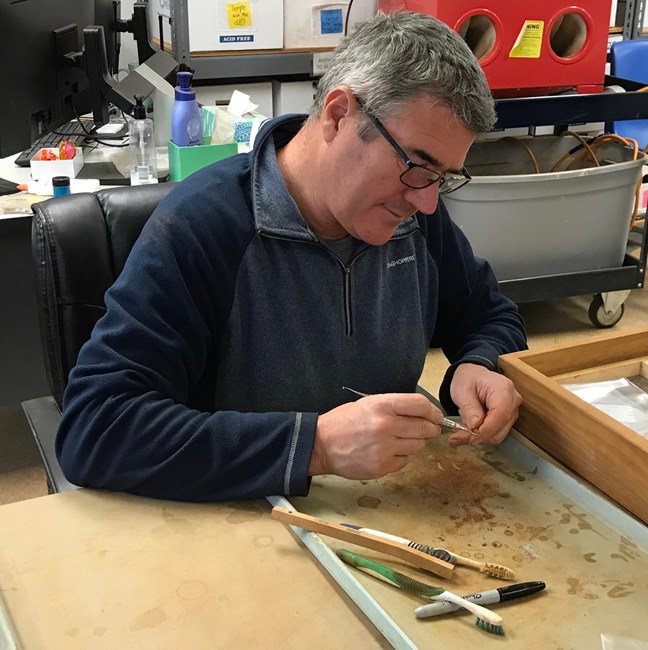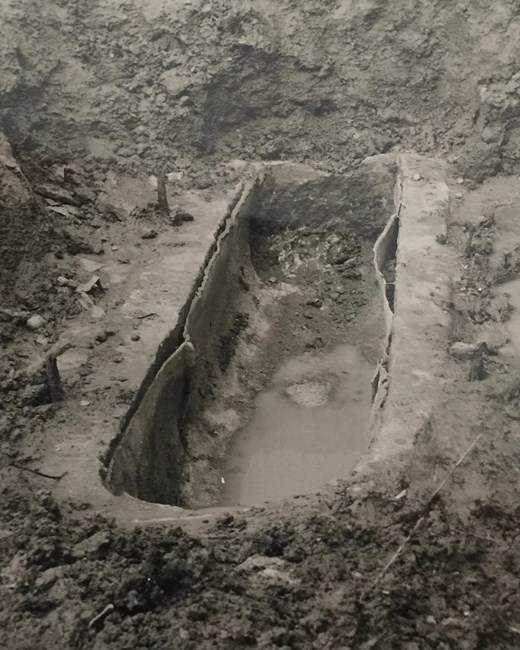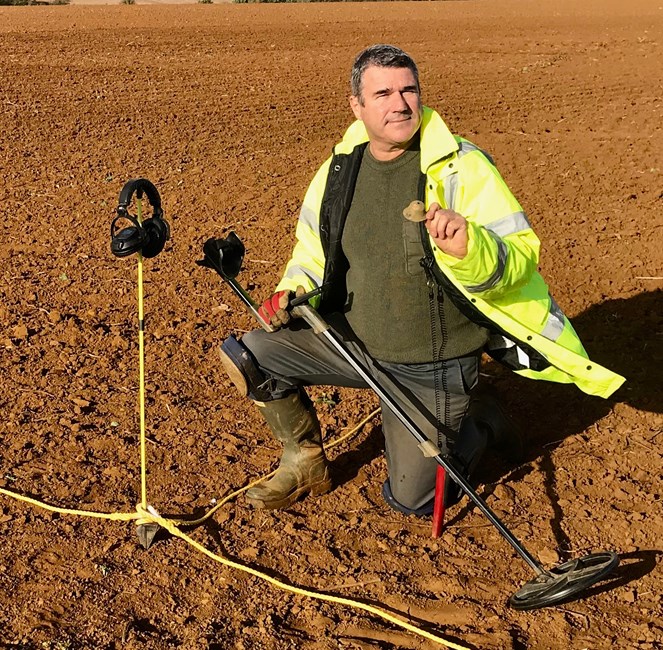Grant to Help Set Up New Body to Support Metal Detectorists | Historic England
A £50,000 grant from Historic England is a step forward towards the setting up of a new organisation to support and train metal detectorists in the UK.
Working with archaeologists and others in the heritage sector, the ‘Institute of Detectorists’ aims to provide training opportunities to promote responsible metal detecting and examine how metal detecting has been beneficial in the investigation of archaeological sites and landscapes.
The project will explore how best to develop such an institute and help to establish an agenda for best practice as well as determining how this can be taught as part of a national training programme. It will also support voluntary self-regulation and provide a platform for detectorists to demonstrate their competence and skills to others.

© Keith Westcott
Keith Westcott, the metal detectorist who is behind the project, has 25 years experience of metal detecting and is passionate about ensuring that the archaeological value of metal detecting is fully realised. In 2019, Keith won the Archaeological Training Forum Award for creating the first ever course focused on skills development for metal detectorists.
He has also made a number of finds including the Civil War hoard at Broughton Castle in Oxfordshire in 1996. Three Spanish silver coins were among those found and are believed to be linked to Queen Henrietta Maria who met with King Charles on the 13th July 1643. They stayed that night near Broughton Castle at Wroxton Abbey.

Keith pointed out that;
“The aim of this project is to establish a not-for-profit research and educational body for detectorists. This body would promote responsible metal detecting as a technique that contributes to the understanding, conservation and protection of the historic environment”
Barney Sloane, the National Specialist Services Director Historic England stated;
“This project provides an opportunity to build on an increasingly positive relationship between the responsible metal detecting community, archaeologists and other heritage organisations. The proposed institute could prove to be of great benefit for portable antiquities, archaeology and the wider public. This new body aims to train people in best practice in metal detecting and we applaud that.“
A Project Advisory Board and Focus group will be set up to help steer the development of the Institute and the feasibility study also has the support of national bodies such as the Portable Antiquities Scheme, Department for Digital, Culture, Media and Sport, Council for British Archaeology and Chartered Institute for Archaeologists.
The detecting community will be consulted on a business plan which outlines the role of the Institute, the membership structure and the framework for the training programme which will be focused on heritage and conservation.

Examples of responsible metal detecting
The largest hoard of Anglo-Saxon gold and silver ever found, the Staffordshire Hoard links back to an age of warrior splendour in seventh century England. Found by a metal detectorist in 2009, the hoard consists of fragments of high-quality war gear, mainly swords.
After archaeologists were alerted to the finds, Historic England gave funds and advice to Staffordshire County Council to help retrieve and secure them. A major public fund-raising effort purchased the hoard jointly for Birmingham City Council and Stoke-on-Trent City Council. Birmingham Museums Trust and the Potteries Museum & Art Gallery, Stoke-on-Trent are jointly responsible for the care of it.
In 2017, a medieval cluster brooch dating circa 1400 was discovered in 2017 by a metal detectorist on farmland in Brigstock, Northamptonshire which was once a former royal hunting ground. The diamond and gold brooch is thought to be one of only seven in the world.
The brooch, which was declared as treasure, was purchased by the Victoria and Albert Museum earlier this year. The Treasure Act states that finds of potential treasure must be reported to the local coroner within 14 days of discovery.
Read also:
Our Portable Past Guidance for Good Practice Published 20 February 2018

